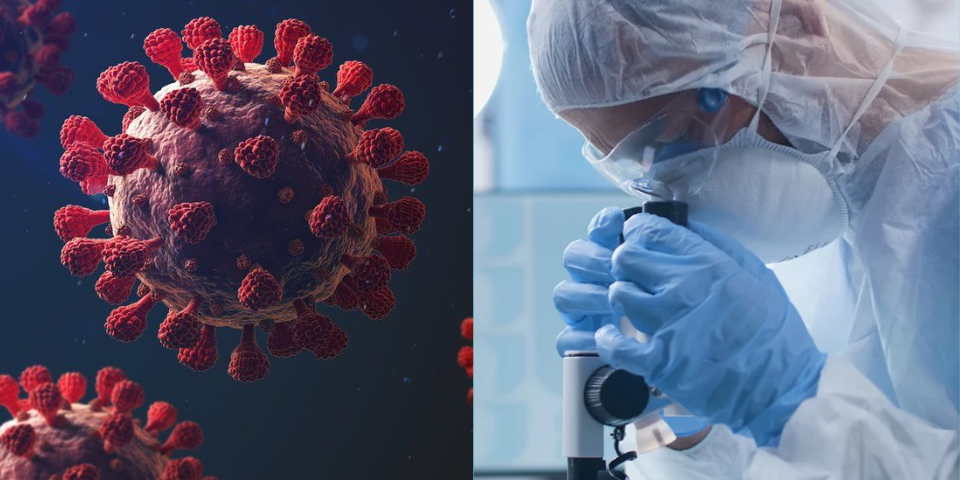A team of researchers at Boston University in the U. S. has reportedly developed a new COVID-19 variant that has an 80-percent kill rate in mice, fueling a bit of controversy following the world’s easing away from the recent pandemic.
The team published a yet-to-be-peer-reviewed paper on their work on biorxiv, and explained that the experiment involved creating a chimera of the SARS-CoV-2 gene by combining the S gene of the Omicron variant with the base of an older form of the virus. When compared against the currently dominant Omicron variant, results showed that the lab-created specimen was considerably more dangerous, causing an 80-percent mortality rate in mice, and appearing up to five times more infectious. The team claims that the work was conducted in an effort to derive a better understanding of the virus’s spike protein in terms of how harmful a variant can be.
According to several news outlets, the team performed the work under biosecurity level 3 precautions at the university’s Emerging Infectious Diseases Laboratories, and so far there has been no indication that the research was carried out in a dangerous manner. Despite this, the research has come under intense scrutiny from other scientists and even the U. S.
government. While the work was initially approved by an internal review committee and Boston’s Public Health Commission, it has been revealed that the team failed to gain clearance from the National Institute of Allergy and Infectious Diseases (NIAID), which so happens to be a funder of the project. The NIAID’s director of microbiology and infectious diseases Emily Erbelding said that the university team’s original grant applications didn’t exactly specify that this was the sort of work that was going to be conducted, much revealing that they were about to enhance a virus with the potential to cause an entire pandemic.
Additionally, she said that she wished that the team would have informed NIAID of its intent to carry out such research beforehand. Richard H. Ebright, an American molecular biologist, also slammed the paper and labeled it “gain-of-function research”, which is the medical practice of genetically altering an organism to enhance its biological functions, all for the purpose of getting a better insight into how it works.
Unsurprisingly, such methods have raised plenty of concern regarding safety and the potential of creating even deadlier pathogens that could be released into the public sphere. “It is especially concerning that this new U. S.
government enhanced potential pandemic pathogen (ePPP) research — like the previous U. S. government ePPP research on chimeric SARS-related coronaviruses at Wuhan Institute of Virology that may have caused the pandemic — appears not to have undergone the prior risk-benefit review mandated under U.
S. government policies,” he said. The team has however disputed assertions of gain-of-function research, and insisted that the work done did not make the original COVID-19 strain more virulent, and instead said that it would go some ways to helping scientists better understand the Omicron variant and develop methods to combat it.
“First, this research is not gain-of-function research, meaning it did not amplify the Washington state SARS-CoV-2 virus strain or make it more dangerous,” the university said in a statement. “In fact, this research made the virus replicate less dangerous. ” Lead study author Mohsan Saeed said that the research has actually shown how it isn’t the spike proteins that causes Omicron’s proficiency at causing diseases, but other viral proteins.
“Determination of those proteins will lead to better diagnostics and disease management strategies,” he said. Obviously, such experiments may seem like definite causes for concern in times like these (especially when most of the world is just starting to move on from the effects of the pandemic). But while some sectors are calling for stricter rules when dealing with gain-of-function research, other experts in the field have debated in favor of such methodology as a means of staving off future pandemics.
“For example, in 2003, when the original SARS-CoV outbreak occurred, researchers developed a method to study the virus in the laboratory,” said several authors in a Conversation article on the subject. “One of the experiments was to grow the virus in mice so they could study it. This work led to a model for researching the virus and testing potential vaccines and treatments.
” “Gain-of-function research that focuses on potential pandemic pathogens has been supported on the premise that it will help researchers better understand the evolving pathogenic landscape, be better prepared for a pandemic response, and develop treatments and countermeasures. ” These thoughtful insurance ads were designed to save your life. .
. Literally. Huge, unusually powerful explosion in space just detected by scientists 12 Malaysian startups get selected to be part of Endeavor’s ScaleUp program Biker shares ingenious ‘sticker hack’ to get cars to give way on the highway Bali still has a trash problem.
Just watch this surfer struggle to SWIM through it. Cover image sourced from BBC and Free Malaysia Today . .
From: mashable
URL: https://sea.mashable.com/life/21620/research-team-pisses-people-off-by-creating-new-covid-19-variant-with-80-kill-rate



